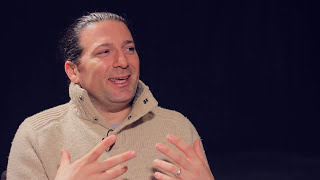In Chapter 8 of 18 in her 2012 Capture Your Flag interview, Neuroscience Institute Executive Director Stacie Grossman Bloom answers "When Are You at Your Best?" Bloom notes how she benefits from taking a step back from the minutiae of daily live to get a strategic, big picture perspective and make decisions. While she enjoys performing under pressure she notes the importance of gathering different insights to make the decision. She shares the experience of putting together the Neuroscience Institute for NYU Langone Medical Center.
Stacie Grossman Bloom is Executive Director for the Neuroscience Institute at the NYU Langone Medical Center. Previously, she was VP and Scientific Director at the New York Academy of Sciences (NYAS) and, before that, held editorial roles at the Journal of Clinical Investigation and Nature Medicine. She earned her BA in chemistry and psychology from the University of Delaware, her PhD in Neurobiology and Cell Biology at Georgetown University and did post-doctoral training in Paul Greengard's Nobel Laboratory of Molecular & Cellular Neuroscience at Rockefeller University.
Transcript:
Erik Michielsen: When are you at your best?
Stacie Grossman Bloom: I think I’m at my best when I’m under pressure. I think I’m at my best when I have the opportunity to think strategically and take a step back and look at the full picture. I think you know it’s very easy in any job to get very wrapped up in the day-to-day minutiae and all of the little details, it’s not so often that you have the opportunity to just take a deep breath, take a step back, assess the overall picture and make very strategic and important decisions. And I think those are the times when I’m at my best.
Erik Michielsen: How have you come to realize that over time?
Stacie Grossman Bloom: You know, I think when I started this job as executive director of the NYU Neuroscience Institute, there wasn’t a lot going on at the very, very beginning. We had to lay out all these plans and that was the time that I was thinking most big picture strategically, and then as it was rolling out we were hiring people, I was putting together the administrative infrastructure, we started recruiting the faculty and life became more about, you know, how do we on board this person? Where are the fire exits? You know, I have to go through this checklist for human resources and train all of these people? How do I get them on payroll? What are their scientific areas of interest? How do I transfer their grants over? And I realized, wow, I’m gonna get really wrapped up in these daily details, at least once a week, I need to stop, and think back at why are we here? What’s our vision? What’s our mission? How are we accomplishing it? What are the steps that we’re making? What are our major accomplishments? What are our goals? And allow myself the opportunity to think that way and give myself the time to work like that.























